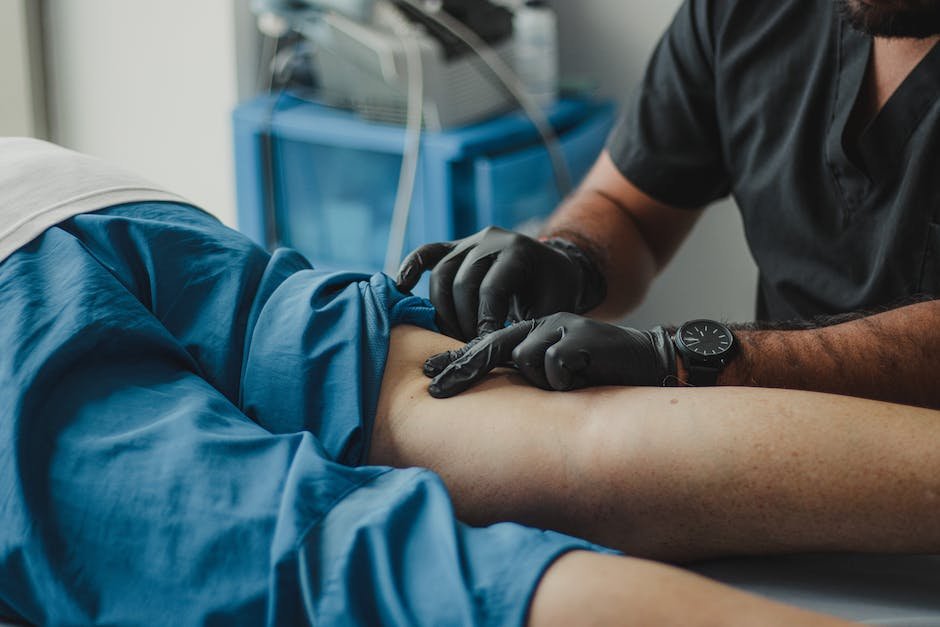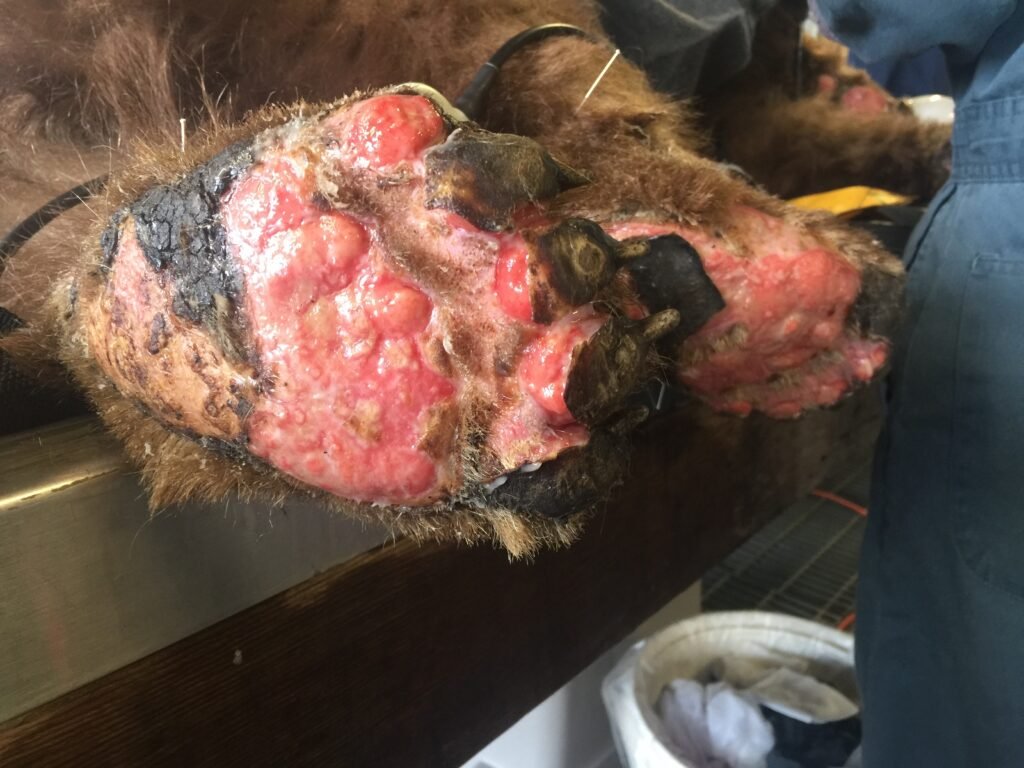Now Reading: How to Treat Sprains and Strains in the Wild
-
01
How to Treat Sprains and Strains in the Wild

How to Treat Sprains and Strains in the Wild
As sunlight filters through the dense foliage, casting ethereal patterns on the forest floor, a thrill of adventure runs through your veins. Escaping the confines of civilization and venturing into the wild can be an exhilarating experience for outdoor enthusiasts. Whether hiking majestic trails, fording icy rivers, or climbing rugged mountains, nature’s beauty holds promises of a transformative journey. Yet, as we immerse ourselves in untamed landscapes, we must also acknowledge the risks that come with it. One misstep, an unfortunate twist of fate, and suddenly, the tranquility could be shattered by a sprain or strain. In these untamed settings, where medical help is far from reach, understanding how to treat these injuries can be the difference between a minor setback and a grueling ordeal. So, let us embark on a guide that will equip you with essential knowledge to handle sprains and strains amidst enchanting wilderness, where Mother Nature herself offers the solace and remedy.
Table of Contents
- Recognizing the Signs and Severity of Sprains and Strains
- Immediate First Aid Measures for Sprains and Strains in Outdoor Settings
- Utilizing Natural Remedies and Resources to Alleviate Pain and Reduce Swelling
- Preventive Measures and Techniques to Avoid Further Injury in the Wilderness
- Emergency Evacuation and Seeking Professional Medical Help
- Q&A
- Insights and Conclusions

Recognizing the Signs and Severity of Sprains and Strains
Whether you’re an athlete, an avid gym-goer, or simply going about your daily activities, sprains and strains are common injuries that can disrupt your routine. Being able to recognize the signs and severity of these injuries can help you seek the right treatment and avoid further complications.
Signs of a Sprain:
Sprains occur when the ligaments, which connect bones and provide stability, are stretched or torn. Some common signs of a sprain include:
- Pain and tenderness: You may experience sudden pain and tenderness in the affected area.
- Swelling and bruising: Swelling and bruising commonly accompany sprains, indicating damage to the ligaments.
- Limited range of motion: Difficulty moving the joint or limb is characteristic of a sprain.
Signs of a Strain:
Strains, on the other hand, involve the stretching or tearing of muscles or tendons. The following signs may indicate a strain:
- Localized pain: You may experience sharp pain in the affected muscle or tendon.
- Muscle spasms: Involuntary contractions or spasms can occur due to a strain.
- Swelling and inflammation: Similar to sprains, strains can cause swelling and inflammation around the injured area.
It’s important to understand the severity of sprains and strains to determine the most appropriate course of action. While mild injuries often improve with rest, ice, compression, and elevation (RICE), severe cases may require medical attention and rehabilitation. Remember to always consult a healthcare professional for an accurate diagnosis and personalized treatment plan.
Immediate First Aid Measures for Sprains and Strains in Outdoor Settings
Sprains and strains can happen unexpectedly, especially when participating in outdoor activities. It’s important to know how to provide immediate first aid to alleviate pain and prevent further damage. Here are some essential measures to take when facing these common injuries in outdoor settings:
1. **Rest and protect the injured area**: Encourage the affected person to stop any activity and avoid putting weight or strain on the injured limb. If necessary, provide support such as crutches or a splint to immobilize the area and prevent further movement.
2. **Apply cold compression**: Immediately after the injury, using a cold pack or a makeshift ice pack wrapped in a cloth, apply cold compression to the sprained or strained area for about 20 minutes. This can help reduce pain, swelling, and inflammation. Remember to always provide a barrier (like a cloth) between the ice pack and the skin to prevent ice burn.
3. **Elevate the injured limb**: In order to reduce swelling, encourage the individual to elevate the injured limb above heart level, if possible. This can be done by propping the leg or arm on pillows or using any available support. By promoting blood flow away from the injury, this technique aids in reducing swelling and discomfort.
Remember, these immediate first aid measures are integral to providing temporary relief, but it is still essential to seek medical attention promptly for a proper evaluation and treatment plan.
Utilizing Natural Remedies and Resources to Alleviate Pain and Reduce Swelling
When faced with pain and swelling, turning to natural remedies can often provide effective relief without the need for medications or invasive treatments. Mother Nature has bestowed us with a plethora of resources that possess incredible healing properties. By harnessing the power of these natural remedies, you can soothe discomfort and promote overall wellness.
Effective Natural Remedies:
- Turmeric: This vibrant spice contains curcumin, an active compound renowned for its anti-inflammatory properties. Incorporating turmeric into your diet or consuming it as a natural supplement can help alleviate pain and reduce swelling from conditions such as arthritis.
- Cold Compress: Applying a cold compress to the affected area can efficiently numb the pain and constrict blood vessels, thereby reducing swelling. This simple and accessible method provides instant relief and can be easily repeated throughout the day as needed.
- Epsom Salt Baths: Soaking in a warm bath infused with Epsom salts can work wonders in soothing muscle pain and reducing inflammation. The magnesium sulfate in Epsom salts penetrates the skin, promoting muscle relaxation and relieving swelling.
Additional Natural Resources:
In addition to specific remedies, there are several natural resources that can aid in pain relief and swelling reduction:
- Herbal tea: Certain herbal teas possess analgesic and anti-inflammatory properties, such as chamomile, ginger, and peppermint. Regular consumption of these soothing beverages may help alleviate pain and reduce swelling.
- Aloe vera: The gel extracted from aloe vera leaves is renowned for its soothing and healing properties. Applying it topically can help ease pain and inflammation, especially for skin-related ailments.
- Essential oils: Essential oils like lavender, eucalyptus, and peppermint have been used for centuries for their pain-relieving and anti-inflammatory effects. Diluted and applied topically or diffused in the air, they can provide a calming and healing atmosphere.
By tapping into the healing power of natural remedies and utilizing readily available resources, you can effectively alleviate pain and reduce swelling in a gentle and holistic way. Embracing these natural alternatives not only promotes your well-being but also fosters a deeper connection with the natural world around us.

Preventive Measures and Techniques to Avoid Further Injury in the Wilderness
In order to ensure your safety and avoid further injury while exploring the wilderness, it is essential to take preventive measures and employ certain techniques. Here are some valuable tips to keep in mind:
- Stay hydrated: One of the most crucial aspects of wilderness safety is to stay hydrated. Carry an adequate supply of clean water and regularly consume it to avoid dehydration, which can lead to fatigue and impair decision-making abilities.
- Proper footwear: Wear sturdy, well-fitting boots that provide good ankle support and traction. This will help prevent ankle injuries and slips on rugged or slippery terrains. Don’t forget to break in your boots before embarking on your wilderness adventure.
- Know your limits: While it can be tempting to push yourself in the great outdoors, it’s important to know your physical and mental limits. Don’t hesitate to slow down or take rest breaks when needed. Overexertion can lead to accidents and injuries.
- Pack essential first aid supplies: Always carry a well-stocked first aid kit containing bandages, antiseptics, pain relievers, and any necessary prescription medications. Additionally, learn basic first aid techniques beforehand to be prepared for unexpected injuries or emergencies.
- Inform others about your plans: Before heading into the wilderness, make sure to share your detailed itinerary with a trusted friend or family member. This will ensure that someone knows your expected location and can alert authorities in case you don’t return as planned.
- Stay aware of wildlife: Wildlife encounters can be thrilling, but it’s crucial to keep a safe distance and avoid disturbing them. Familiarize yourself with the wildlife in the area you’re visiting and take necessary precautions, such as storing food properly and using bear canisters if required.
By following these preventive measures and employing these techniques, you can decrease the risk of accidents and further injuries while enjoying the beauty and serenity of the wilderness.
Emergency Evacuation and Seeking Professional Medical Help
When faced with an emergency situation, it is crucial to prioritize the safety and well-being of yourself and others. In the event of an evacuation, follow these steps to ensure a swift and safe exit:
- Remain calm: In emergency situations, panic can hinder rational thinking. Take a moment to breathe deeply and gather your thoughts before taking any action.
- Follow instructions: Listen carefully to any evacuation orders or guidance given by emergency personnel. Their expertise will help ensure an organized and efficient evacuation process.
- Secure important belongings: If time permits, gather essential items such as identification documents, medication, and a first aid kit. Keep them easily accessible in case medical assistance is required.
- Assist others: If you are able, lend a helping hand to those who may require assistance, such as children, elderly individuals, or individuals with disabilities. Cooperation and support are key in times of crisis.
- Proceed to designated safe areas: Evacuation routes and safe areas will be clearly marked. Follow them promptly, maintaining a steady pace and avoiding congested areas.
While emergency evacuations are often associated with physical safety, it is equally critical to seek professional medical help when facing health emergencies. Here are some guidelines to consider:
- Assess the situation: Evaluate the severity and urgency of the medical issue at hand. If it poses an immediate threat to life or limb, do not hesitate to call emergency services without delay.
- Contact healthcare professionals: Reach out to your local healthcare provider or emergency hotline for medical advice or assistance. They can guide you on the appropriate steps to take based on the situation.
- Share important information: Provide detailed information about the symptoms, injuries, or conditions experienced by the affected person. This will help medical professionals assess the situation more effectively.
- Follow instructions: Listen carefully to the advice given by healthcare professionals, and follow their instructions closely. They have the expertise to provide the necessary medical care or direct you to the appropriate facility for treatment.
Remember, swift action and seeking professional medical help during emergencies can potentially save lives and prevent further complications. Stay informed, stay calm, and prioritize the well-being and safety of yourself and those around you.
Q&A
What are common causes of sprains and strains in the wild?
Sprains and strains in the wild are often caused by uneven terrain, falls, overexertion, or sudden movements while hiking, climbing, or participating in outdoor activities.
How can I initially treat a sprain or strain in the wild?
The first step is to rest the injured area, applying ice if available to reduce swelling. Compression with a bandage and elevation of the injured limb can also provide immediate relief and prevent further damage.
What natural remedies can I use to manage pain?
Nature provides a variety of pain-relieving options in the wild. Making a cold compress out of crushed plantain leaves can help numb the area. Additionally, applying a poultice made from mashed comfrey leaves can reduce inflammation and ease discomfort.
What should I avoid doing when treating a sprain or strain in the wilderness?
Avoid putting weight on the injured limb, as it can worsen the injury. Refrain from massaging the affected area vigorously, as this can increase pain and inflammation. It is best to avoid any strenuous activities that may further strain the injured muscles or ligaments.
How can I provide support for the injured limb?
Creating a makeshift splint using natural materials like branches or sturdy vines can help immobilize the injured limb, providing stability and preventing further damage. Wrapping the splinted area with a scarf or cloth can provide added support.
Are there any wild plants that can help with reducing inflammation?
Yes, several wild plants possess anti-inflammatory properties. Applying crushed yarrow leaves or making a paste with powdered turmeric and aloe vera gel can help reduce swelling and promote healing.
What if I don’t have access to clean water in the wild?
In case you don’t have access to clean water, improvising with wild plants can help clean the wound. Crushed plantain leaves or catnip leaves can be used as a natural antiseptic by applying them directly to the wound before bandaging.
When is it crucial to seek professional medical help for a sprain or strain in the wild?
If the pain is unbearable, the swelling persists, or the injured area feels hot and might be infected, it is crucial to seek medical help. Additionally, if you are unable to bear weight on the limb or notice a visible deformity, it is wise to reach out to professionals for proper evaluation and care.
Insights and Conclusions
As the sun begins to dip below the horizon, casting its vibrant hues across the untamed wilderness, it’s time to bid adieu, knowing that you are now equipped with the wisdom to navigate the treacherous realm of sprains and strains amidst nature’s grandeur. We have journeyed together, exploring the depths of this untamed wild, unearthing the secrets of healing and resilience.
Remember, the wild is an unforgiving realm, where twists and turns may lurk behind every tree and hidden obstacles may eagerly await your misstep. But fear not, dear adventurers, for armed with the knowledge acquired, you shall face these challenges head-on, ready to overcome any adversity that dares to stand in your path.
Gone are the days of uncertainty, where the fear of injury loomed like a dark cloud above your every step. Today, you wrap your sprained ankle with confidence, knowing that the mighty nature, with all its splendor, offers solace and the means to heal. You embody the harmony between man and the wild, dancing in unison with the rhythm of survival.
In this world, where modern conveniences often fail us, it is the resilient spirit of the wild that embraces us, whispering ancient remedies into our eager ears. As you venture forth into the unknown, remember the four pillars of healing: rest, ice, compression, and elevation. Nature born remedies, amidst the towering trees and babbling brooks, shall be your saviors in times of trouble.
With every stride you take, let the memory of our shared journey fuel your determination. Know that you are no longer a novice, stumbling blindly through the dense underbrush. Your boundless strength and newfound knowledge guide you, as surely as the North Star lights the way for weary wanderers.
So, as our paths diverge, may your steps be light and nimble, may your ankles remain steadfast on this untamed terrain. Carry the torch of knowledge with you, let it shine through the darkest corners of the wild, illuminating the paths of those who follow in your footsteps.
Farewell, brave souls, as you traverse the untamed land. May your spirits remain untethered, and your hearts forever connected to the forces that dwell within nature’s embrace. Until we meet again, remember our journey together and let it shape your resilience, strengthening your resolve to conquer any challenge that dares to cross your path in the vast and majestic wilderness. Safe travels, and may your sprains and strains forever be but a distant memory.
As an affiliate, my content may feature links to products I personally use and recommend. By taking action, like subscribing or making a purchase, you’ll be supporting my work and fueling my taco cravings at the same time. Win-win, right?
Want to read more? Check out our Affiliate Disclosure page.





